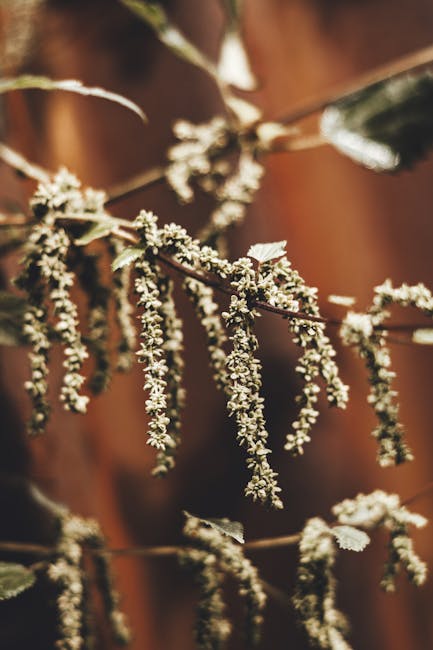Protecting Your Vegetable Garden from Frost: Challenges and Solutions
Seeing a vegetable crop through to harvest can be a rewarding experience, but an unexpected frost forecast can pose a significant challenge. In this detailed guide, we’ll explore the nature of frost, the varying hardiness of vegetables, actionable steps to take when frost is predicted, and how to assess damage after a frost event. Let’s equip you with the knowledge to safeguard your garden.
What Is Frost and How Does It Affect Plants?
Frost occurs when water vapor in the air condenses and freezes directly into ice crystals on surfaces, bypassing the dew stage. Known as hoar, light, or white frost, it forms when the ground temperature drops to 32°F (0°C) or below, even if the air temperature reads slightly above freezing. This can lead to frost damage in plants as ice crystals form inside vulnerable tissues, causing them to split and lose vital nutrients.
In contrast, a hard or black frost, also called a freeze, happens when both air and ground temperatures fall below freezing in dry conditions. Unlike visible frost, a freeze desiccates plant tissues, effectively “burning” them due to water loss.

Photo by Matt Suwak
Understanding Vegetable Hardiness: Which Crops Can Survive Frost?
Vegetables exhibit varying levels of tolerance to cold and frost, categorized into hardy, half-hardy, tender, and very tender. Knowing your crop’s hardiness helps in planning planting times and protection strategies.
Hardy Vegetables
Hardy vegetables can endure heavy frosts and air temperatures below 28°F (-2°C). According to plant breeder James Myers, these crops thrive in cool weather with just 3-6 hours of sunlight daily. Ideal planting times are early spring or late summer, as they may bolt (go to seed) in high heat. Examples include:
- Spinach
- Kale
- Brussels Sprouts
- Cabbage
Half-Hardy Vegetables
Half-hardy crops tolerate light frosts and temperatures between 28-32°F (-2 to 0°C). They prefer cool conditions but require at least 6 hours of full sun daily. Plant these in late spring before the last frost or in summer for early fall maturity. Like hardy crops, they risk bolting in heatwaves. Examples include:
- Carrots
- Beets
- Chinese Cabbage
- Lettuce

Photo by Matt Suwak
Tender Vegetables
Tender crops need temperatures above 32°F (0°C) and may withstand a light frost. They require 8 hours of sunlight per day and should only be planted after the last spring frost date, with summer plantings maturing before the first fall frost. Examples include:
- Beans
- Corn
- Peppers
Very Tender Vegetables
Very tender vegetables are the most fragile, requiring 8-12 hours of sunlight daily and unable to tolerate any frost. They must be planted after all frost risk has passed and harvested before fall frosts. Examples include:
- Tomatoes
- Cucumbers
- Lima Beans
- Eggplant
Preparing Your Garden for a Frost Event
As the first frost date nears, proactive measures can make a significant difference in protecting your crops. Here are key steps to minimize damage:
- Watering: Continue watering your plants, focusing on the soil near the roots rather than foliage. Watering during the day before a predicted frost helps crops retain warmth and generate heat through transpiration.
- Harvesting: Pick mature crops and those that ripen post-harvest, such as tomatoes and peppers. Collect seeds for next season and mark plant locations, as foliage may become waterlogged and unrecognizable after frost.
- Protecting Plants: Hardy vegetables often survive and may even taste better after frost. However, half-hardy, tender, and very tender crops need protection. Use covers to create a warm microclimate. Suitable materials include:
- Buckets
- Burlap
- Cloches
- Horticultural Fleece
- Newspaper
- Trash Bags
While some gardeners advocate for thick mulch layers, beware that mulch can trap moisture and heat, potentially encouraging ice formation rather than releasing warmth into the surrounding air. When using covers, secure them with bricks, rocks, or stakes to withstand strong winds.
Evaluating Damage After Frost
The morning after a frost can be both beautiful and nerve-wracking for gardeners. While hardy crops like cabbage may appear unscathed, tender plants often show dark, limp foliage resembling cooked spinach. Damage becomes clearer as thawing progresses, sometimes taking a couple of days to fully manifest.
Post-frost damage can affect all plant parts and may present as:
- Blistering
- Bruising
- Cracking
- Discoloration
- Foul Odor
- Shriveling
- Slimy Texture
- Softness
- Splitting
- Translucence
- Water Saturation
Assess each crop individually. Often, you can salvage parts by trimming damaged sections. For instance, the inner head of a soggy cabbage may still be usable, or a pumpkin may remain edible even if its vine dies. Plants that survive typically continue to mature post-frost.
A common myth, debunked by experts, is that rhubarb becomes poisonous after frost. While its leaves contain oxalic acid and are inedible, frost-damaged rhubarb turns black and mushy, making it unappealing rather than toxic.
Meeting Late-Season Gardening Challenges
Armed with an understanding of frost dynamics, crop hardiness, protective techniques, and damage assessment, you’re well-prepared to tackle late-season gardening challenges. Hardy plants offer the best resilience, but even half-hardy and tender crops can survive with adequate covering. For enthusiasts of tender vegetables, consider season-extension tools like cold frames or row covers to prolong growth.
It’s time to plan and sketch out your ultimate vegetable garden! Have you faced frost-related crop damage? What are your go-to methods for plant protection? Share your experiences and questions in the comments below!
Additional Resources for Frost Protection
If you found this guide helpful, check out these related resources for more gardening tips:
- Frost Protection Techniques for Beginners
- Seasonal Vegetable Planting Guide
- Cold Frame Construction for Year-Round Gardening
Photos by Matt Suwak © Ask the Experts, LLC. All Rights Reserved.
Uncredited Photos: Shutterstock








